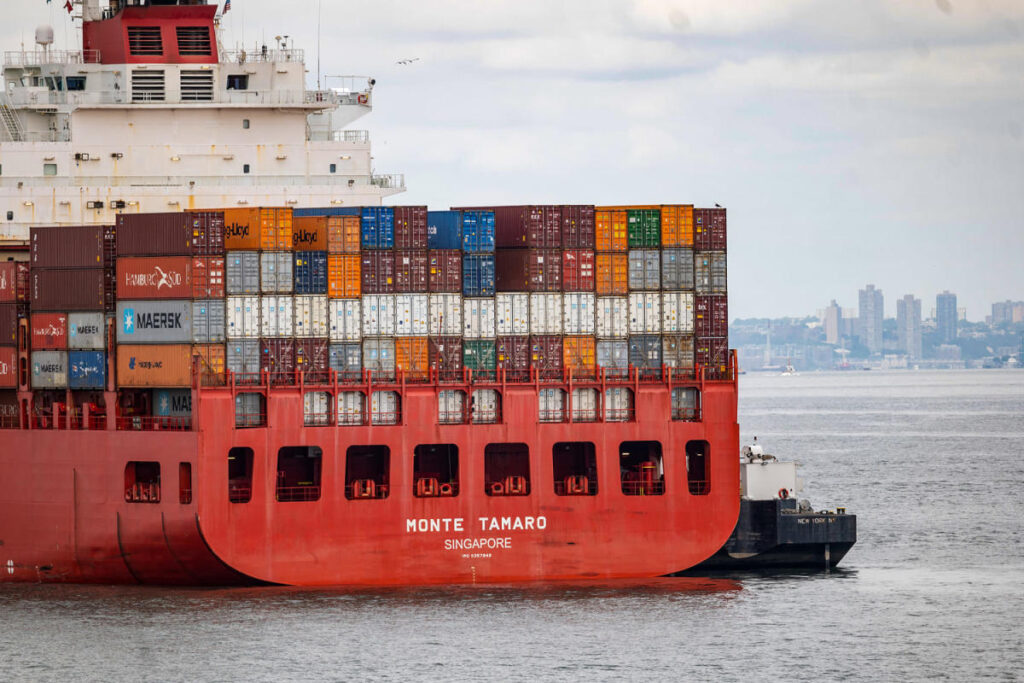Tariffs, essentially taxes imposed on imported goods, have become a focal point in the discourse surrounding American economic policy, especially with former President Donald Trump advancing new proposals for higher tariff rates. During a recent speech at the Economic Club of Chicago, Trump expressed his enthusiastic views on tariffs, stating, “The most beautiful word in the dictionary is tariff.” His proposals, which include a blanket 20% tariff on all imports, up to 100% on goods from countries that abandon dollar trade, and a staggering 2,000% tariff on vehicles manufactured in Mexico, have sparked a significant response from economists across the political spectrum. The consensus among experts is largely against these ideas, raising concerns about their potential impact on consumer prices and overall economic stability.
Tariffs serve as economic deterrents, effectively penalizing U.S. companies that choose to import foreign products. When a tariff is implemented, U.S. importers must pay a percentage of the goods’ price to the federal government. In theory, this system encourages domestic sourcing of products, thereby bolstering American manufacturing. Trump argues that the revenue generated from tariffs could be substantial, suggesting that it could fund tax cuts and support social programs like childcare. However, businesses facing these tariffs often find two primary responses: either they stop importing the affected goods altogether and seek domestic alternatives, or they raise their selling prices to offset the increased costs. This leads to a scenario where slightly elevated tariffs can translate into increased costs for consumers, making basic goods and services more expensive.
Vice President Kamala Harris most emphatically criticized Trump’s tariff strategy, dubbing it “a sales tax on the American people,” and estimating that such measures could raise costs for households by an average of $4,000 annually. While some economists put this estimate lower—suggesting an increase of about $2,500 to $3,000—the underlying premise remains that tariffs would have tangible effects on household budgets. This sentiment is echoed by various economists who believe that, irrespective of the specific figures, an increase in tariffs would likely correlate with a rise in consumer prices. The complexities of how these tariffs affect domestic and foreign markets could lead to indirect financial pressures on American consumers as well.
Despite broad skepticism among economists regarding tariffs, there is a noticeable rise in bipartisan support for protective trade measures. Many feel that previous policies of unfettered trade have led to unwelcome economic and social ramifications. During Trump’s administration, various industries, including agriculture, claimed that tariffs were negatively impacting their profits, prompting the government to provide tens of billions in subsidies to these sectors. The Biden administration, however, has largely continued the trend of maintaining tariffs, extending duties on Chinese goods and even imposing additional tariffs on $18 million worth of imports essential to strategic industries. This continuation of protective tariff strategies signifies an emerging consensus that while tariffs may present immediate hurdles for consumers, they are designed to give breathing space to domestic industries.
Proponents of Trump’s tariff plans assert that they are essential for protecting U.S. manufacturing by discouraging competition from foreign producers. However, the reality painted by economists suggests a more nuanced picture. Historical trends have indicated that tariffs rarely produce the intended effects of reducing foreign prices. Furthermore, economic analyses demonstrate that consumers ultimately bear the burden of these tariffs through higher prices for domestic goods as American manufacturers similarly increase their prices in response to the costs of imported materials. Price hikes observed in the wake of the 2018 tariffs on washing machines serve as a prime example of this phenomenon, where even domestic producers raised their prices significantly, further exacerbating consumer costs.
Polls have illustrated a divided public sentiment regarding tariffs; while some surveys show diminished support, others indicate a narrow majority backing Trump’s proposals. Consumers are drawn to the notion that tariffs could protect jobs and resurrect domestic manufacturing sectors. However, they are often unaware of the increase in costs associated with these tariffs, both for consumers and businesses relying on imported materials. Additionally, economists from the nonpartisan Tax Foundation predict that Trump’s latest tariff schemes could detract from the U.S. gross domestic product by 0.8% and potentially lead to a loss of 684,000 jobs. With the tumultuous nature of job creation and the expense attached to each job, the intricacies of tariffs unveil a host of economic challenges that can outweigh their purported benefits for the American workforce.
In conclusion, the evolving discourse surrounding tariffs highlights the intersection between economic policy and political discourse. As Trump elevates his tariff proposals leading into the election, the examination of their practical implications becomes increasingly crucial. While tariffs are sold as a means to uplift American manufacturing and protect jobs, the reality embodies a complex relationship between international trade dynamics, consumer prices, and broader economic health. The persistent growth of tariffs and trade protectionism reflects deep-seated concerns about the current state of American industry and the fluctuating perceptions of what constitutes a successful economic policy. Ultimately, the challenge lies in balancing patriotism in trade with the harsh realities of consumer costs and economic sustainability.

